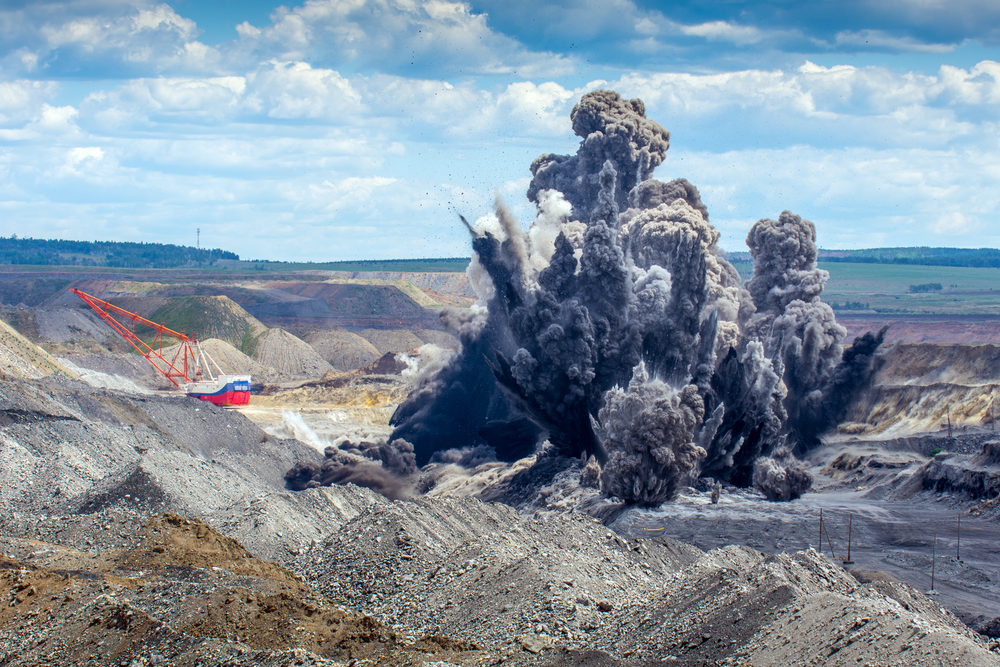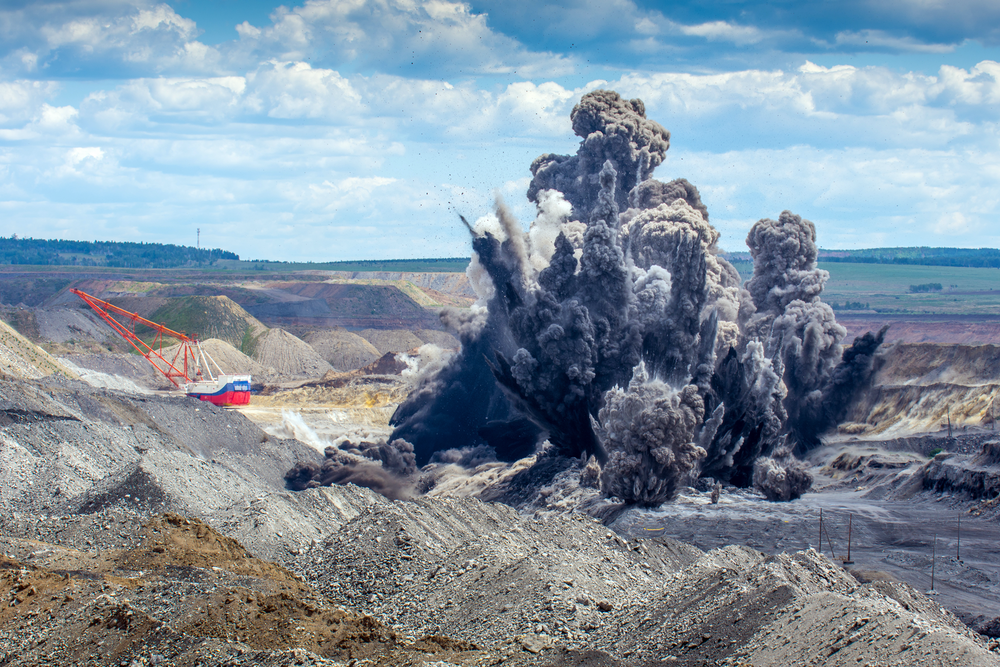“Off Switch” Makes Explosives Safer
Despite great effort, researchers have failed to find ways to make explosives entirely safe during storage yet still easily usable when needed. Now a research team has demonstrated an explosive with these properties by creating a highly porous structure for their explosive material [1]. The voids prevent the structure from supporting a sustained propagating wave of detonation, but filling the voids with water can quickly restore the explosive capacity. The researchers hope this technique can provide safer explosives for use in areas such as mining and oil exploration.
Storing highly explosive materials is inherently risky—in the military world, for example, over 500 accidental explosions occurred at munitions sites between 1979 and 2013, according to a survey [2]. These materials could be safer if they could be easily switched between an explosive-ready state and a “safe” state. “A switchable explosive is the holy grail of explosives research,” says chemist Alexander Mueller of the Los Alamos National Laboratory in New Mexico. He and his colleagues believe that they are the first to achieve it.
In a typical explosive like TNT, following a trigger, a so-called detonation wave of pressure and heat travels rapidly through the material, triggering the explosive reaction in each region, which reinforces the wave as it goes. Mueller and his colleagues reasoned that by fabricating a standard explosive material into a matrix riddled with voids filled with air, they could cause the pressure wave to quickly dissipate but in a way that would be reversible. In preliminary simulations of such a structure, the team found that if the geometry were chosen correctly, the voids would disrupt the wave and prevent it from propagating through the material. In contrast, the simulations showed that filling the voids with an ordinary fluid such as water would preserve the high pressure of the detonation wave, allowing it to spread.
To demonstrate the effect in practice, the researchers ran a series of experiments using a common commercial explosive known as HMX or octogen. They used a 3D printer to produce 400- 𝜇m-thick layers of parallel, cylindrical, octogen strands with 320- 𝜇m spacing between neighboring strands in a layer. With each successive layer, they rotated the alignment direction by 90°, creating a Lincoln Log-like structure where each strand contacts other strands only in layers above and below and only at right angles.
The team sandwiched a 5-mm-thick sample of this structure between two thin aluminum plates. In eight experiments under a range of conditions, the researchers triggered detonation waves and captured high-speed video of the results. They also measured the energy released by detecting the velocity at which the two aluminum plates were forced apart.
In the experiment with air in the voids, the triggered detonation wave was disorganized and quickly died out. Although a combustion front propagated by heat rather than pressure moved across the sample, it only released energy from the surface layers. All of the experiments with liquids filling the voids triggered organized detonation waves that consumed most of the explosive fuel and produced 45–50 times the energy of the air-filled structure’s explosion.
A key difference between the two cases lies in the speed of the traveling wave, Mueller says. The combustion front travels slower than the speed of sound, while the high-pressure detonation wave is supersonic. “The supersonic delivery of the pressure is what gives an explosive such massive power,” he says.
The team also found that the choice of fluid could affect the details of the resulting explosion. For example, using a water solution of sodium polytungstate—a high-density liquid—increased the energy released in the explosion by nearly 10% and decreased the detonation wave velocity by 13%. This adjustability, the researchers say, could be useful in customizing the explosive for particular applications.
“These results are somewhat surprising,” says explosives expert Levi Gottlieb of Rafael, a defense company in Israel. “With air in the gaps, the detonation will not freely propagate across the material but is dissipated into the surroundings. This finding has a high likelihood of being useful.”
–Mark Buchanan
Mark Buchanan is a freelance science writer who splits his time between Abergavenny, UK, and Notre Dame de Courson, France.
References
- C. B. Brown et al., “Switchable explosives: Performance tuning of fluid-activated high explosive architectures,” Phys. Rev. Lett. 130, 116105 (2023).
- E. Berman and P. Reina, “Unplanned explosions at munitions sites (UEMS): Excess stockpiles as liabilities rather than assets,” Small Arms Surv. (2014).





